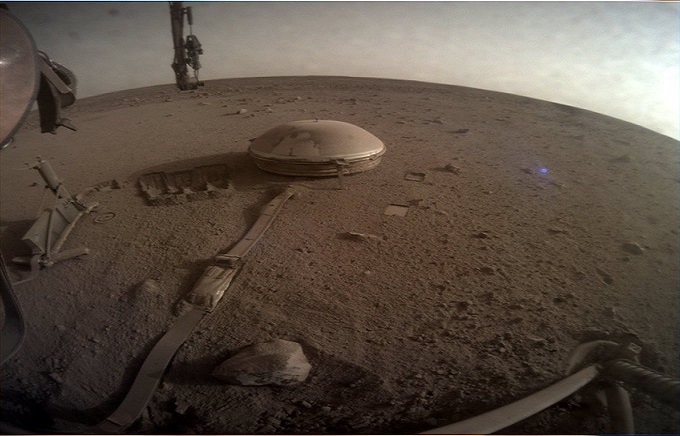
Credit: NASA's InSight
NASA’s InSight: An America space agency Lander has delivered what could be its final image from Mars. The lander touched down on the Red Planet four years ago and has been sending several images from there to help scientists uncover the planet’s secret.
Dust has covered the solar panels installed on Lander. Its power is running low, and it’s only a matter of time before Mars InSight switches off for good. A tweet from its official handle revealed that this is probably going to be the last image the InSight sends from Mars.
“My power’s really low, so this may be the last image I can send. Don’t worry about me though: my time here has been both productive and serene. If I can keep talking to my mission team, I will – but I’ll be signing off here soon. Thanks for staying with me,” the space agency tweeted its Twitter handle.
My power’s really low, so this may be the last image I can send. Don’t worry about me though: my time here has been both productive and serene. If I can keep talking to my mission team, I will – but I’ll be signing off here soon. Thanks for staying with me. pic.twitter.com/wkYKww15kQ
— NASA InSight (@NASAInSight) December 19, 2022
NASA will officially end the mission when the lander misses two communication attempts in a row with a spacecraft orbiting the planet.
Previously in research
In October, for the first time the robotic lander detected seismic waves travelling along the Martian surface, as opposed to deeper in the body of the planet. The reverberation of these waves along the surface gave clues about the crust, the planet’s outermost layer, over a wide geographical expanse in the northern hemisphere.
Since it arrived on Mars in November 2018, InSight has detected the largest impacts. Its scientific mission was originally planned to last two years but subsequently extended for two more.
InSight also established that Mars is seismically active by detecting more than 1,000 marsquakes, the largest of which came in May of this year with a magnitude of 5.0 – medium-sized compared to quakes on Earth.
The three-legged InSight – short for Interior Exploration Using Seismic Investigations, Geodesy and Heat Transport – sits in a vast and relatively flat plain called Elysium Planitia, just north of the Martian equator.
Also read: SpaceX launches O3b mPower satellites
To read more such news, download Bharat Express news apps





















